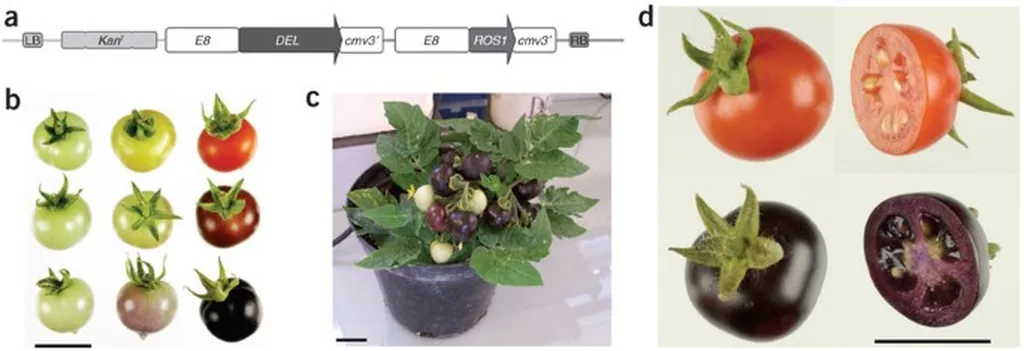In the heart of China, researchers are unlocking the secrets of the humble tomato, potentially revolutionizing the way we think about this staple crop and its impact on human health. A recent study published in *Frontiers in Plant Science* delves into the complex world of tomato phytochemicals, offering insights that could reshape agricultural practices and boost the nutritional value of our food.
Tomatoes are more than just a kitchen staple; they are a powerhouse of beneficial compounds like flavonoids, phenolic compounds, and carotenoids, including lycopene and β-carotene. These phytochemicals are not just products of chance but are intricately regulated by a symphony of genetic, environmental, and agronomic factors. The study, led by Essam ElShamey of the Biotechnology and Germplasm Resources Institute at the Yunnan Academy of Agricultural Sciences, sheds light on the molecular machinery that controls the accumulation of these health-promoting compounds.
At the center of this molecular ballet is the RIPENING-INHIBITOR (RIN) transcription factor, a master regulator of fruit maturation. RIN directly controls lycopene accumulation by binding to the promoters of critical biosynthetic genes. “RIN directly activates the expression of PHYTENE SYNTHASE 1 (PSY1), the key rate-limiting enzyme committing metabolic flux to the carotenoid pathway, and PDS, encoding phytoene desaturase,” explains ElShamey. This orchestration leads to the massive lycopene synthesis characteristic of the ripening transition.
The implications for agriculture are profound. By leveraging this understanding, scientists can develop strategies for biofortification—enhancing the nutritional value of tomato fruits through targeted genetic manipulation. Overexpression of key enzymes, such as the bacterial CrtB (phytoene synthase) or manipulation of the endogenous PSY1, has already shown promise in boosting lycopene content. More profoundly, manipulating transcription factors offers a powerful multi-gene approach. For instance, overexpressing fruit-specific promoters driving RIN or other regulators like HYR (High Pigment) can simultaneously improve the entire pathway, leading to substantial increases in lycopene content.
But the story doesn’t end with lycopene. Flavonoids and phenolic compounds, produced by the phenylpropanoid pathway, are also regulated by a complex interplay of transcription factors and phytohormones. Environmental factors play a crucial role too; optimal lycopene synthesis occurs at 20-25 °C, while higher temperatures above 30 °C inhibit lycopene accumulation and promote beta-carotene synthesis. This temperature-sensitive expression is mediated by key genes, including those regulated by RIN.
The study also highlights the potential of naturally occurring or induced mutations in genes like DET1 and HP2, which are negative regulators of light signal transduction. These mutations result in high pigment phenotypes with dramatically increased lycopene and flavonoid content. The successful application of metabolic engineering and transcription factor manipulation for biofortification holds immense promise for developing next-generation tomato cultivars with amplified health-promoting properties.
For the agriculture sector, this research opens up new avenues for crop improvement. By understanding and manipulating the genetic and environmental factors that influence phytochemical accumulation, farmers and breeders can develop tomatoes with enhanced nutritional profiles. This not only benefits consumers but also creates new market opportunities for farmers and agribusinesses.
As we look to the future, the integration of advanced biotechnology and traditional breeding practices could lead to a new era of crop cultivation. The work of ElShamey and his team is a testament to the potential of agricultural science to improve human health outcomes, directly linking the fields of molecular biology and public health. In the words of ElShamey, “This research is not just about understanding the biology of tomatoes; it’s about harnessing that understanding to create healthier, more nutritious foods for everyone.”
With the findings published in *Frontiers in Plant Science*, the stage is set for further exploration and innovation. The journey to unlock the full potential of tomatoes has only just begun, and the implications for agriculture, health, and society at large are vast and exciting.

